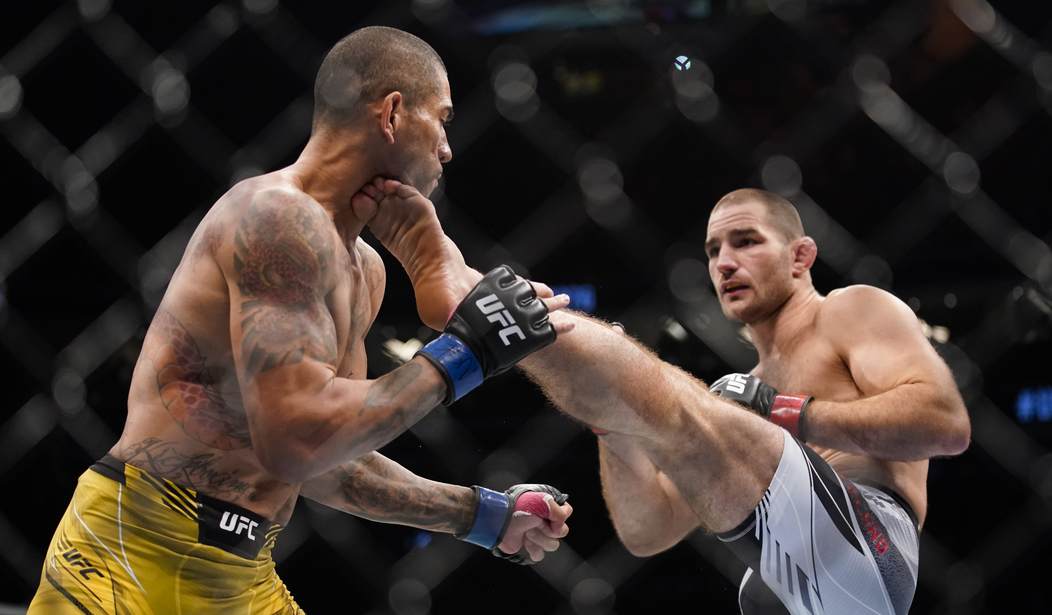They were gods. John L. Sullivan. Jack Dempsey. Joe Louis. Rocky Marciano. Muhammad Ali. Joe Frazier. George Foreman. Larry Holmes. Mike Tyson. Evander Holyfield.
There was a time when the heavyweight champion was the most famous man on the planet. They were bigger than kings and more instantly recognizable than presidents. At the peak of his fame, Muhammad Ali could’ve traveled to the farthest corners of the world — some remote hut in the middle of nowhere — and somehow, every villager would know his name: “Ali boma ye!”
Today? Do you even know who the heavyweight champion is?
To appreciate just how dramatically boxing has fallen, consider this: At one point, boxing was THE most popular sport in the United States. Boxing was our passion! Sure, foreign competitors occasionally popped up. Argentinian Luis Angel Firpo famously knocked Jack Dempsey clear out of the ring in round one. Dempsey viciously KO’d him in round two. Max Schmeling of Germany had a classic two-fight rivalry with Joe Louis. Ingemar Johansson of Sweden treated us to a trilogy with Floyd Patterson in the late 1950s and early 1960s. And English folk hero Henry Cooper flattened a young, cocky kid who was still known as Cassius Clay in the fourth only to get stopped on cuts in the fifth.
But boxing was universally perceived as an American sport. Almost without fail, for 100 years, the world’s greatest boxers were Americans.
During the first half of the 20th century, boxing was ubiquitous on radio and television. Every major newspaper had three or four full-time boxing writers on their payroll. It was in our blood: Boxing was far bigger than football, exponentially bigger than basketball and hockey, and even bigger than baseball, our so-called “national pastime.”
And today? The two most talked-about boxers of 2024 are YouTuber Logan Paul and an Olympic competitor of unclear/misreported gender. Ouch!
Meanwhile, the Ultimate Fighting Championship — the premier mixed martial arts (MMA) league — was valued at $12.3 billion in April of 2023.
That’s far more than every single NFL franchise(!), including the Dallas Cowboys.
The UFC’s deal with ESPN (just domestically) is valued at a whopping $1.5 billion!
Joe Rogan does MMA. So does Mark Zuckerberg, Robert Downey Jr., Chris Pratt, Chris Hemsworth, Snoop Dogg, Gisele Bündchen, Ashton Kutcher, Keanu Reeves, and Elon Musk. In the recent “Roadhouse” remake, Dalton (Jake Gyllenhaal) is now a UFC star. MMA is hip and trendy: All the cool kids are into it! Meanwhile, boxing is… passé.
Thirty years ago, when rock stars Vince Neil and Axl Rose were feuding, Neil challenged Rose to a boxing match. Rose recorded the song “Get in the Ring,” where he dared his detractors to box him. (Axl is quite physically imposing, you know.) Back then, boxing was still perceived as the definitive test of one’s testicular fortitude — an ultra-manly way to resolve disputes.
But today, when billionaires Elon Musk and Mark Zuckerberg are beefing, it doesn’t even occur to them to put on gloves and step in the ring. Instead, it’s all about MMA: Your cage or mine?
What happened to boxing?
Why did MMA supplant it?
And are there any lessons for politics?
The answer to the first two questions is interconnected: Boxing has multiple sanctioning bodies but no true operational oversight. It never was organized like a traditional sports league. Instead, it relied on exposure and financial pressures to bring the top fighters together.
For a good 80 or 90 years, this formula worked beautifully. Boxing was turnkey to produce for radio and TV broadcasts; during the Golden Age of those media, boxing had near-limitless exposure. Young, hungry, up-and-coming fighters would appear on the airwaves every few months, so you could follow their trajectory and become lifelong fans. Closed circuit broadcasts and Pay Per View telecasts became economic factors in the 1970s, 1980s, and 1990s, but for the most part, they were reserved for the super-fights. There were still oodles of free content, and premium channels like HBO and Showtime invested heavily in the fight game.
In 1986, a 20-year-old boxer named Mike Tyson battled Marvis Frazier — Joe Frazier’s son — on ABC’s “Wide World of Sports.” (Tyson cornered Frazier and decapitated him within 30 seconds.) This was on free TV — broadcast television — and between everyone who watched, and everyone else who heard about it from those who did, Mike Tyson won not just the fight, but millions of new fans. Many of those fans stayed with him throughout the entirety of his career.
There’s nowhere for a young, up-and-coming boxer to earn that kind of free publicity anymore.
By the 2000s, the top boxers realized they could move almost all their fights to PPV and make far more money. For them, sticking to PPV was their best profit model. Their fans weren’t thrilled, of course, but it’s probably unfair to fault fighters for maximizing their income while they’re still young and healthy. They did what was right for them. It just wasn’t right for their sport.
Without the top fighters appearing on regular TV, boxing lacked an “anchor attraction” to reel in new fans. It just wasn’t possible to fight on the undercard of a Mike Tyson card and be showcased before millions on ABC. Then, in the 2010s and 2020s, PPV merged with streaming, and the end result is what we have today: A boxing schedule that’s impossible to follow without stress, planning, lots of money, and subscribing to multiple platforms.
Meanwhile, the UFC is tightly organized. It’s a cohesive sports league, ruled with an iron fist by the great Dana White. The top UFC fights almost always happen, the scheduling is easy to follow, and new talent is constantly being showcased to their fanbase. From weekly fight cards on ESPN to reality TV (“The Ultimate Fighter”) to social media, the UFC makes it super-easy to be a superfan.
It’s an astounding achievement in sports marketing: I worked in MMA. (Well, I did PR/media for MMA; Lord knows I’m way too cowardly to actually fight in a cage. Plus, I cry like a girl when people hit me.)
In those early days, there were lots of misconceptions from journalists and sponsors. It took a long time to move beyond John McCain’s “human cockfighting” critique. But one by one, all the different states began legalizing cage fighting, and when we’d stage the first MMA card in their states, it would be front-page news. Before long, the sponsors followed the fans. Accruing this momentum wasn’t easy, but once we had it, the grassroots MMA fanbase exploded. This was a different kind of fan. Landing stories in the daily newspaper or terrestrial radio did little to generate ticket sales, but a nice story on a site like MMAJunkie.com would do wonders.
This was an audience that veered young, attended events, spent money, and consumed info digitally: The exact audience demo that sponsors covet! Which left boxing with no audience. And now it’s down for the count.
It’s a shame because a great prizefight is still better than a great MMA fight in my opinion. There’s more opportunity for back-and-forth action, and most of the time in boxing, the better fighter wins. MMA is more unpredictable and prone to upsets; there’s no standing eight-count, so if you get caught with a solid shot, it’s a lot harder to recover and continue. In MMA, the better man often wins, but the outcomes seem more random.
So what’s the political lesson?
- All movements, including political movements, must have a feeder system to stay competitive. When your feeder system dies, you’ll die with it even though it might take a while. (It took boxing 30 years.)
- An organized, well-run movement will absolutely destroy an unorganized one — even if the unorganized one had a 100-year head-start.
- If you’re not willing to fight for your audience, someone else will, and your audience will leave with them.
- An organization must conform its presentation to the dominant media because the media is under no obligation to conform to the organization.
- The 2024 Olympics DID NOT give boxing a black eye. Hey, this is boxing: We ran out of black eyes back in the 1920s. At this point, it’s just wailing on a decomposing corpse.
Learn these lessons well, lest your organization’s epitaph be Terry Malloy’s immortal cry from “On the Waterfront”: “I coulda been a contender!”
Followed by Roberto Duran: “No más.”










Join the conversation as a VIP Member